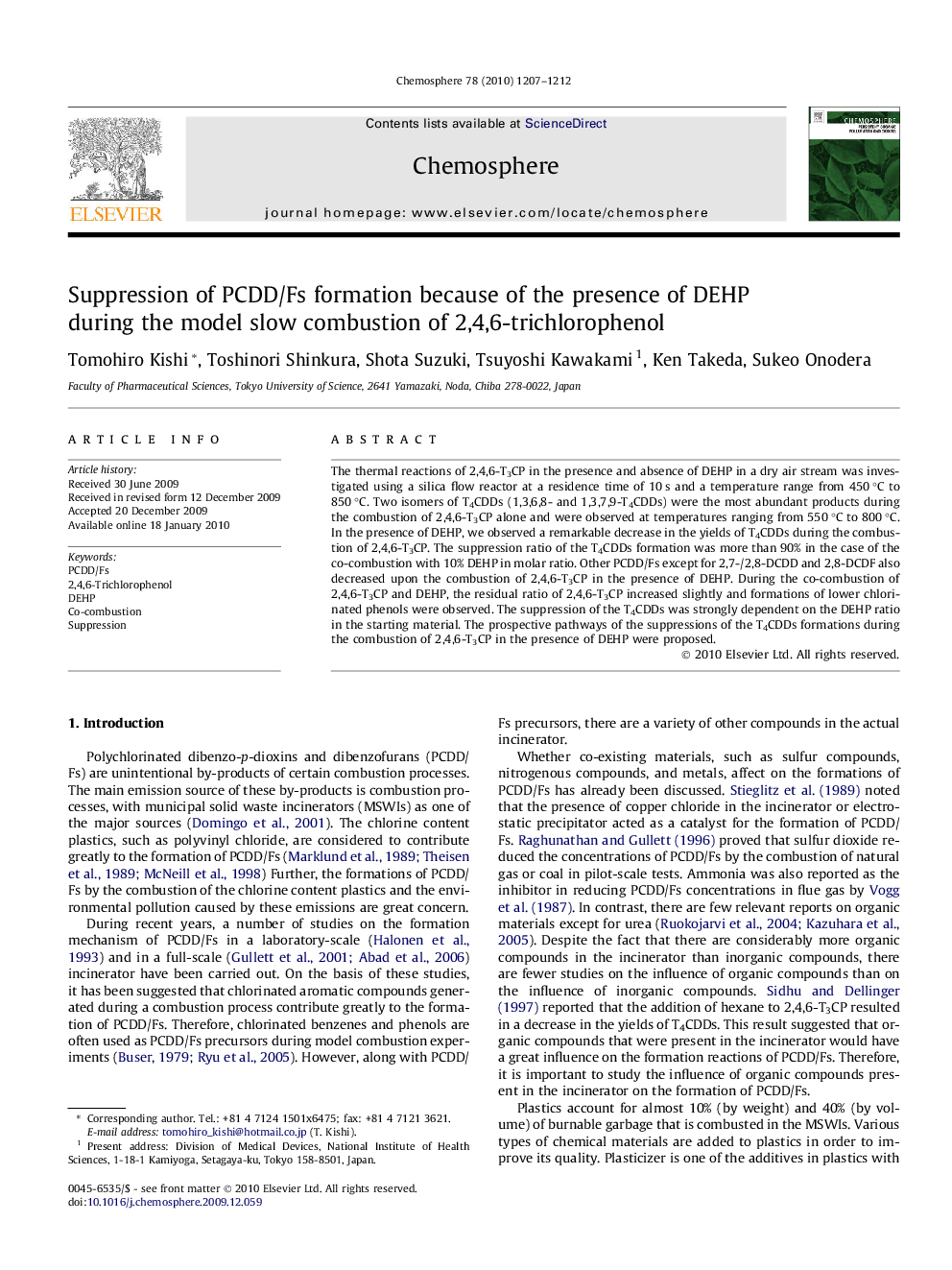| Article ID | Journal | Published Year | Pages | File Type |
|---|---|---|---|---|
| 4411747 | Chemosphere | 2010 | 6 Pages |
Abstract
The thermal reactions of 2,4,6-T3CP in the presence and absence of DEHP in a dry air stream was investigated using a silica flow reactor at a residence time of 10 s and a temperature range from 450 °C to 850 °C. Two isomers of T4CDDs (1,3,6,8- and 1,3,7,9-T4CDDs) were the most abundant products during the combustion of 2,4,6-T3CP alone and were observed at temperatures ranging from 550 °C to 800 °C. In the presence of DEHP, we observed a remarkable decrease in the yields of T4CDDs during the combustion of 2,4,6-T3CP. The suppression ratio of the T4CDDs formation was more than 90% in the case of the co-combustion with 10% DEHP in molar ratio. Other PCDD/Fs except for 2,7-/2,8-DCDD and 2,8-DCDF also decreased upon the combustion of 2,4,6-T3CP in the presence of DEHP. During the co-combustion of 2,4,6-T3CP and DEHP, the residual ratio of 2,4,6-T3CP increased slightly and formations of lower chlorinated phenols were observed. The suppression of the T4CDDs was strongly dependent on the DEHP ratio in the starting material. The prospective pathways of the suppressions of the T4CDDs formations during the combustion of 2,4,6-T3CP in the presence of DEHP were proposed.
Related Topics
Life Sciences
Environmental Science
Environmental Chemistry
Authors
Tomohiro Kishi, Toshinori Shinkura, Shota Suzuki, Tsuyoshi Kawakami, Ken Takeda, Sukeo Onodera,
